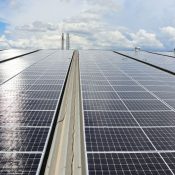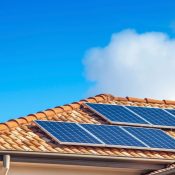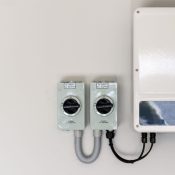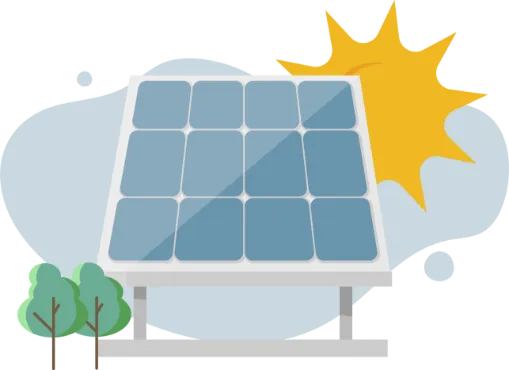How to Survey a Roof for Solar PV?

Have you ever wondered if your roof is suitable for solar panels? Deciding to go solar is a smart move, but it’s not just about buying panels and getting them installed. The real first step is a thorough roof survey to ensure your solar dream doesn’t hit any snags.
In this blog, we’ll guide you through the essential process of surveying a roof for solar photovoltaic (PV) systems. We’ll explain why it’s crucial, what to look for, and how to use the latest tools and techniques for an accurate assessment. Whether you’re a homeowner eager to join the solar revolution or a professional installer, understanding how to properly survey a roof is key to a successful solar PV installation.
Let’s dive into the world of solar surveys and start harnessing the power of the sun!
Preparing for the Solar Site Survey
Preparation is Key:
Before you step onto the roof, gather all essential documents and information. This includes site plans, blueprints, and recent utility bills. These documents provide valuable insights into the site layout, existing electrical infrastructure, and energy consumption patterns. It’s also important to have clear communication with the client to understand their specific requirements and goals for the solar panel system.
Site Accessibility and Safety:
Assess the accessibility of the site, especially the roof. Determine whether special equipment or permits are needed for roof access and ensure that all safety protocols are in place to prevent accidents during the survey. Understanding and mitigating potential hazards is crucial for a successful and safe solar site survey.
Steps in Conducting a Solar Site Survey
Evaluating Solar Potential:
The first step in the survey is to analyse the site’s solar potential. This includes assessing the sun’s path, roof orientation, and tilt angle. These factors are critical in determining the optimal placement of solar panels for maximum energy production.
Roof Assessment:
The condition of the roof is of utmost importance. Examine its structural integrity, material, age, and load-bearing capacity. It’s essential that the roof can support the weight and stress of solar panels over a long period.
Shading and Obstruction Analysis:
One of the most critical factors affecting solar panel efficiency is shading. Identify any potential sources of shading, such as trees or nearby structures. Even minimal shading can significantly impact the energy output of solar panels.
Electrical Infrastructure Assessment:
Understanding the site’s existing electrical setup is vital. This step involves assessing the capacity of the current electrical system and determining any necessary upgrades or modifications to accommodate the new solar system.
Utilising Tools and Technology
Tools for Precision:
Accurate data collection is crucial for solar panel installation. Common tools used in solar site surveys include tape measures for physical dimensions, laser distance meters for hard-to-reach areas, and solar pathfinders for shading analysis.
Making use of Technology:
Advanced technologies like drones and 3D modeling software have revolutionised solar site surveys. Drones, in particular, offer a safe and efficient way to capture high-resolution images and generate detailed 3D models of the site. These models are invaluable for precise system design and installation planning.
Software Solutions:
There are several software tools available that aid in various aspects of solar site surveys. These include solar design software for energy production estimates and shading analysis. Utilising these tools not only increases accuracy but also streamlines the survey process, saving time and resources.
Documentation and Reporting
After thoroughly assessing your roof’s suitability for solar PV installation, as outlined in the previous sections, the next crucial step is Documentation and Reporting. This stage is where you consolidate all the data and insights gathered during the survey.
A comprehensive report should include:
Detailed Findings:
Summarise the roof’s condition, solar potential, shading analysis, and electrical infrastructure.
Photographic Evidence:
Attach clear, labeled photographs of the roof, potential obstructions, and electrical setups.
Design Recommendations:
Based on the survey, suggest optimal placement and types of solar panels.
Client Specifications:
Highlight any specific requests or conditions mentioned by the client.
Safety Observations:
Note any potential safety concerns observed during the survey.
This report not only serves as a blueprint for the solar installation but also helps in maintaining clarity and transparency with all stakeholders involved.
Innovative Techniques and Strategies
The solar industry is rapidly evolving, integrating advanced technologies to make solar site surveys more efficient and accurate.
Drone Technology:
Drones have revolutionised solar surveys. They can quickly and safely capture high-resolution images of the roof, reducing the need for manual measurements and risk of accidents.
3D Modeling Software:
Tools like IMGING or Scanifly can process drone-captured images to create detailed 3D models of the site. This aids in precise panel placement and shading analysis.
Solar Design Software:
As discussed in the ‘Utilising Tools and Technology’ section, software like Sunbase Solar Design Software enables accurate energy production estimates and system design without multiple site visits.
These technologies not only enhance accuracy but also significantly reduce the time and cost associated with traditional survey methods.
Common Challenges and Solutions
Despite the advancements, solar site surveys can present challenges:
Inaccessible Areas:
Some roofs may have areas that are difficult to access.
Solution: Use drone surveys to capture data from hard-to-reach spots.
Complex Roof Structures:
Varied roof designs can complicate the survey.
Solution: Employ 3D modeling software to accurately visualise and plan for complex structures.
Shading Issues:
Potential shading from nearby objects can affect solar efficiency.
Solution: Conduct thorough shading analysis using tools like solar pathfinders or software simulations.
Changing Regulations:
Compliance with local regulations can be tricky.
Solution: Stay updated with local building codes and solar installation regulations.
By addressing these challenges with the right mix of technology and expertise, you can ensure a smooth and effective solar PV installation process.
In our next section, we’ll tie all these aspects together, giving you a comprehensive understanding of how to survey a roof for solar PV installation, ensuring a successful solar energy journey.
Bringing It All Together: A Comprehensive Approach to Solar PV Roof Survey
In the previous sections, we have walked through the various steps and techniques involved in surveying a roof for solar photovoltaic installation. Now, let’s tie all these elements together to form a comprehensive approach, ensuring your journey towards harnessing solar energy is as smooth and effective as possible.
Initial Assessment and Preparation
Begin with a thorough assessment of the client’s needs and the site specifics. Gather essential documents and understand the roof’s layout and electrical infrastructure.
On-Site Survey
Conduct a detailed on-site inspection. Measure the roof, assess its condition, and evaluate the solar potential considering factors like orientation, tilt, and shading. Remember, the accuracy of this step is crucial for the success of the entire project.
Utilising Modern Technologies
Utilise innovative tools such as drones for aerial imagery and 3D modeling software for accurate mapping and visualisation. This step not only enhances precision but also ensures safety by reducing the need for physical roof access.
Shading Analysis and Electrical Assessment
Perform an in-depth shading analysis to identify any potential obstructions. Assess the existing electrical system for compatibility and potential upgrades.
Documentation and Reporting
Compile all the data collected into a comprehensive report. Include roof measurements, shading analysis, photographic evidence, and any recommendations for optimal solar panel placement.
Addressing Challenges
Be prepared to tackle common challenges such as inaccessible areas, complex roof structures, or shading issues. Utilise the appropriate technological solutions to overcome these obstacles.
Final Recommendations and Design Planning
Based on the survey, provide final recommendations for the solar PV system. This should include panel types, placement, and estimated energy production. Ensure that the design is compliant with local regulations and codes.
Client Engagement and Education
Keep the client informed and educated throughout the process. A well-informed client is more likely to be satisfied with the final outcome.
Forward Planning
Consider future factors such as potential shading from growing trees or new constructions. Plan the installation in a way that minimises future disruptions or efficiency losses.
After-Survey Follow-Up
Once the survey is complete and the report is delivered, maintain open lines of communication for any questions or clarifications. This follow-up ensures that the client feels supported throughout the process.
By following these steps, you’ll ensure that your solar PV roof survey is not just a routine check but a comprehensive analysis that lays a solid foundation for an efficient, productive solar energy system. Remember, a well-conducted roof survey is the first step towards a sustainable and energy-efficient future.
To Sum Up
Surveying a roof for solar PV installation is a vital step in joining the renewable energy revolution. This blog has guided you through the necessary preparations, the use of innovative technologies like drones and 3D modeling, and tackling common challenges. We’ve highlighted the importance of detailed documentation and client engagement for a successful solar project.
Solar energy not only offers environmental benefits but also reduces energy costs. If you’re considering going solar, remember that a thorough roof survey is your first step towards a sustainable future. Interested in exploring solar options for your home or business? Contact our professionals at Going Solar today and take the first step towards a greener tomorrow. Let’s harness the power of the sun together!
Planning a switch to solar energy?
Contact Going Solar now and Get Free Advice & Quote Within Minutes!
Frequently Asked Questions
Contact Going Solar Now!
Joe Brennan
Founder @ Going Solar
Joe Brennan, the founder of Going Solar, is dedicated to making solar power mainstream in Ireland and meet SEAI objectives. With a focus on affordability and sustainability, he is bringing renewable energy solutions to homes, reducing costs & environmental impact.
Recent Posts







